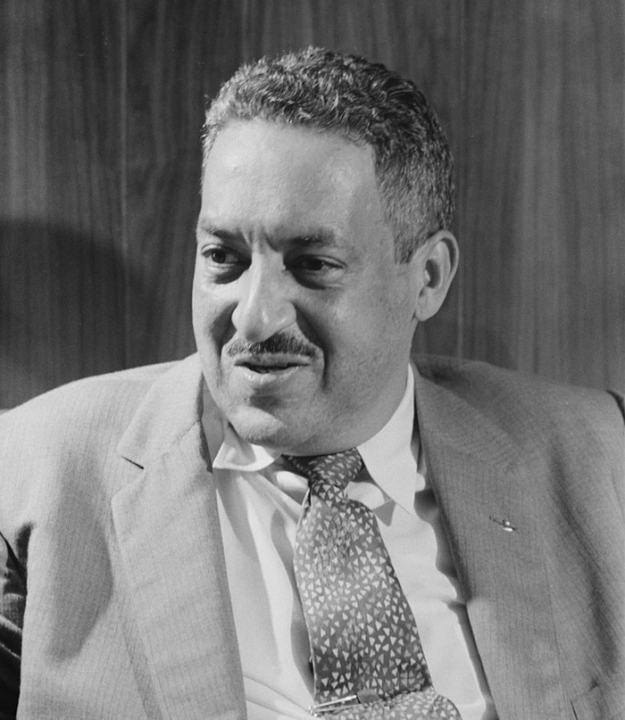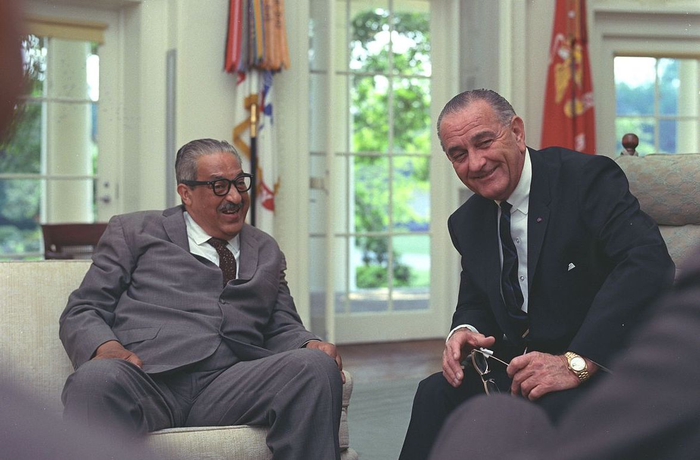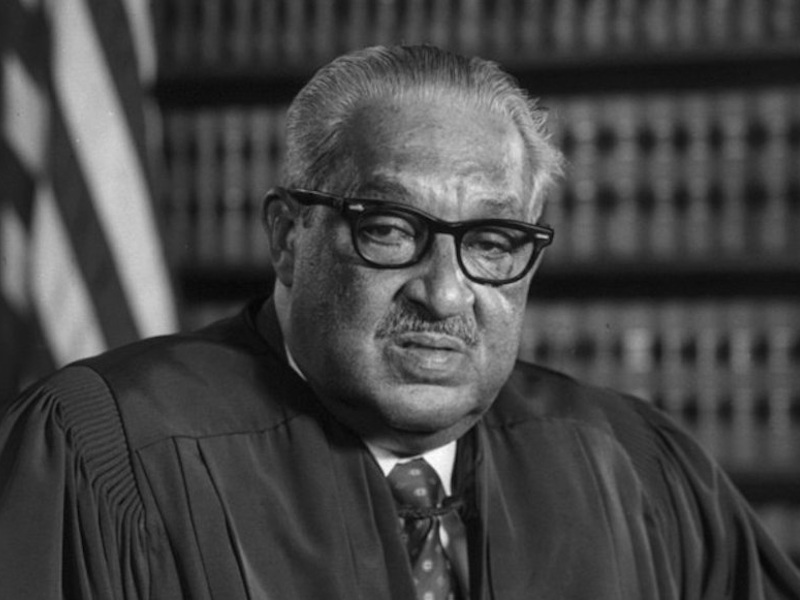Image: Thurgood Marshall. Public Domain
On October 2, 1967, a pivotal moment in American history unfolded as Chief Justice Earl Warren administered the oath of office to Thurgood Marshall, making him the first Black U.S. Supreme Court justice. This landmark event marked the culmination of Marshall’s remarkable journey, shaped by his unwavering commitment to justice and equality, which began with the profound influence of his parents and continued through a groundbreaking legal career.
Early Life and Education
Thurgood Marshall was born to William and Norma Marshall on July 2, 1908, in Baltimore, Maryland. His father, a railroad porter, and his mother, a teacher, instilled in him a deep appreciation for the U.S. Constitution and the rule of law from a young age. This foundation would prove instrumental in shaping Marshall’s future as a legal pioneer.
Marshall’s path to legal greatness was not without its challenges. After being denied admission to the University of Maryland Law School due to racial segregation, he attended Howard University Law School, a predominantly Black institution in Washington, D.C. At Howard, Marshall came under the mentorship of Charles Houston, a prominent civil liberties lawyer. in 1933, he graduated first, laying the groundwork for a distinguished legal career.
Championing Civil Rights with the NAACP
In 1936, Thurgood Marshall joined the legal division of the National Association for the Advancement of Colored People (NAACP), an organization dedicated to combating racial injustice. Two years later, he succeeded his mentor, Charles Houston, as the head of the NAACP’s legal team.

Thurgood Marshall in 1957, then working for the NAACP. Public Domain
Marshall’s first significant case came in 1933 when he successfully sued the University of Maryland Law School to admit Donald Gaines Murray, an African-American graduate from Amherst University. This victory was a significant milestone in dismantling racial segregation in education.
Over the years, Marshall’s legal insight led him to argue over a dozen cases before the Supreme Court over the years. These cases challenged racial segregation in various aspects of American life, most notably in public education. One of his most significant victories came in 1954 in the landmark case of Brown v. Board of Education of Topeka. In this historic ruling, the Supreme Court declared that racial segregation in public schools violated the equal rights clause of the 14th Amendment to the Constitution. This decision would have far-reaching implications for the civil rights movement.
The Journey to the Supreme Court
In 1961, President John F. Kennedy nominated Thurgood Marshall to the U.S. Court of Appeals for the Second Circuit, further solidifying his reputation as a legal trailblazer. Four years later, he left the appeals court to become the U.S. solicitor general, a position that allowed him to represent the government before the Supreme Court.
In 1967, President Lyndon B. Johnson nominated Marshall to fill the vacancy left by retiring Justice Tom Clark on the Supreme Court. His nomination faced a heated debate, but ultimately, he secured Senate confirmation by a vote of 69-11. On October 2, 1967, Chief Justice Earl Warren administered the oath of office, and Thurgood Marshall officially became a Supreme Court justice, making history as the first African American to hold this esteemed position.

Thurgood Marshall and President Lyndon B. Johnson. Public Domain
Legacy and Retirement
During his 24 years on the Supreme Court, Justice Thurgood Marshall continued to challenge bias and inequality in all their forms. His tenure left an indelible mark on the American legal landscape, emphasizing the importance of civil rights and equal protection under the law.
Thurgood Marshall retired from the Supreme Court in 1991, leaving behind a legacy of legal accomplishments that extended far beyond his career.
His tireless dedication to justice and equality will forever be remembered as a beacon of hope and progress in the ongoing struggle for civil rights in the United States.
On January 24, 1993, Thurgood Marshall passed away at 84, leaving a profound and enduring legacy that inspires generations of advocates for equality and justice. His journey from the son of a railroad porter to the first Black Supreme Court justice is a testament to the power of determination, education, and unwavering commitment to the principles of freedom and justice for all.

Anand Subramanian is a freelance photographer and content writer based out of Tamil Nadu, India. Having a background in Engineering always made him curious about life on the other side of the spectrum. He leapt forward towards the Photography life and never looked back. Specializing in Documentary and Portrait photography gave him an up-close and personal view into the complexities of human beings and those experiences helped him branch out from visual to words. Today he is mentoring passionate photographers and writing about the different dimensions of the art world.





